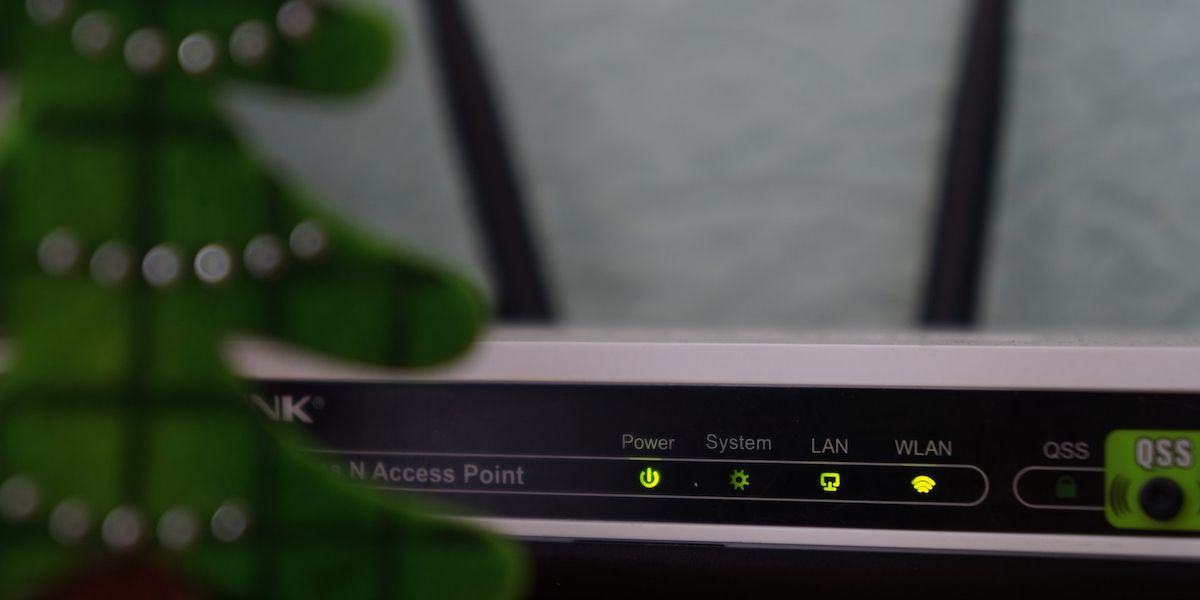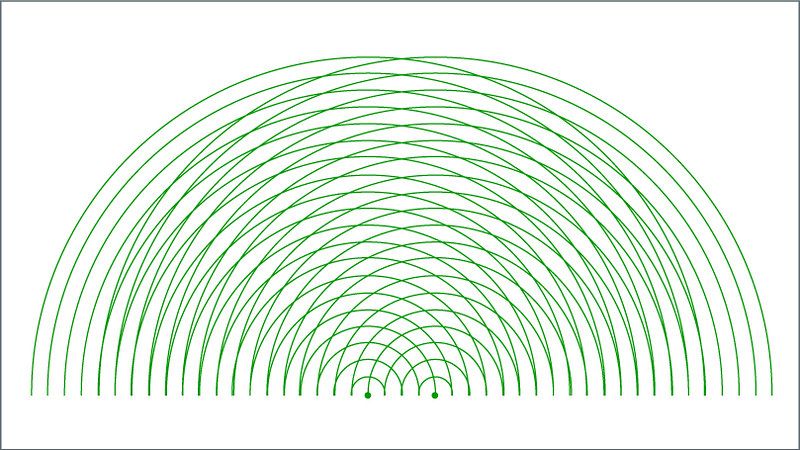All of us are looking for perfect Wi-Fi that reaches every corner of the house and offers the data speeds that our ISP promised. However, to make this dream come true, we need Wi-Fi technology to transmit signals directly to our devices without any degradation.
Enter beamforming, a Wi-Fi technology that does exactly that—but what is it, and can it make your Wi-Fi faster? Well, let's find out.
What Is Beamforming, and Why Do You Need It?
Before getting into beamforming and its advantages, it's important to understand how traditional Wi-Fi routers transmit data.
You see, a traditional router uses radio waves to transmit data. The router uses several antennas to create these waves and send them to your device. These antennas can either be hidden inside the router or protrude out of it in multiple directions, making it look like a transformer.
In most cases, these antennas transmit waves in all directions equally, creating waves in a pattern similar to that of a stone hitting the surface of water. These ripples created by the router enable your device to connect to the internet. That said, these waves get weaker in intensity as they travel longer distances. It is this decrease in the intensity of waves that causes the internet speed on your device to drop and to solve this issue, we have beamforming.
You see, Wi-Fi routers that do not support beamforming send waves in an omnidirectional pattern. Beamforming, on the contrary, aims the radio waves at your device rather than sending them in all directions. Due to this focused approach, the waves can travel greater distances as energy is not distributed in all directions improving signal strength—offering better data speeds.
But how does your router focus these beams of energy? And how does it know your devices' location?
How Does Beamforming Work?
As explained earlier, your router uses antennas to generate radio waves. In most cases, these antennas can radiate energy in a uniform pattern. Therefore, to create directed beams, routers use the concept of interference.
Simply put, interference refers to the variation in wave amplitude when two or more waves collide. This variation in wave amplitudes can either be positive or negative based on the phase of the waves. This means that when two waves collide, they create two areas, one with high signal strength and another with low signal strength.
It is this variation in wave intensities that enables beamforming.
Therefore, when a router wants to send a beam of radio energy to your device, it transmits radio waves at different time durations or phases through each antenna. This difference in time and phase helps steer the waves toward your device—improving Wi-Fi strength.
This brings us to the second question—how does your router know your device's location? Well, to understand that, we have to look at the types of beamforming.
Types of Beamforming
Now that we know how your Wi-Fi router transmits waves, it's time to look at how it calculates its location. There are two ways your Wi-Fi can perform the task at hand.
Explicit Beamforming
In this type of beamforming, the router communicates with your device to understand its position in space. Therefore, for explicit beamforming to work, both the router and your device should support it. Without the same, the router and your device won't be able to transfer beamforming data amongst one another, disabling it.
Explicit beamforming works by transmitting special beamforming data packets to your device. The device uses this data to calculate the steering matrix. This data is then sent back to the router, which creates the beaming waves using the interference concepts explained earlier.
Implicit Beamforming
Unlike explicit beamforming, implicit beamforming works even when your device does not support it. To make this type of beamforming possible, the router transmits beamforming packets to the device, but the device does not communicate the steering matrix to the router. Instead, the router tries to understand signal patterns reaching the device using acknowledgment frames.
You see, every time a device on a Wi-Fi network receives data packets, it sends acknowledgment packets that it has received the data. The acknowledgment frame asks the router to resend the data if the data is not received. Based on these requests, the router can understand the device's location and then manipulate the radio waves, implementing beamforming—improving the transmission efficiency.
Explicit beamforming offers better efficiency when compared to implicit beamforming, as accurate device locations are sent to the router through the device.
Beamforming MIMO and MU-MIMO
As explained in earlier sections, beamforming improves the strength of the radio signal reaching your device, improving wireless connectivity. That said, it also enables technologies like MIMO. Short for Multiple Input Multiple Output, MIMO enables your router to send multiple data streams to your device simultaneously.
Doing so is not possible with traditional routers as data packets are sent on omnidirectional waves, and multiple waves can't be sent to a device simultaneously using this approach. On the contrary, with beamforming, that is not the case, as the router can send multiple streams of data using several beamformed waves.
Due to this transmission of simultaneous data streams, more data can be transmitted to the receiver with better reliability and efficiency. Not only this, the multiple transmission of data streams increases data rates as well.
Understanding MU-MIMO
Both MIMO and beamforming improve the efficiency of Wi-Fi transmission exponentially. That said, even after all these improvements, Wi-Fi has a flaw. It can't transmit data to multiple devices at the same time.
To solve this problem, we have MU-MIMO, a Wi-Fi technology that enables the transmission of data to multiple devices simultaneously, reducing the time each device gets data packets, improving your network's throughput.
The advantages of MU-MIMO can only be seen when data is sent from the router to your device and not the other way around. That said, Wi-Fi 6 tries to solve this problem.
Which Technologies Does Your Wi-Fi Support?
Nothing comes close to Wi-Fi when it comes to technical jargon. With a ton of protocols and technological improvements coming out every year, it's hard to understand the capabilities of the Wi-Fi you are getting.
Here is a brief description of the Wi-Fi technologies supported by different Wi-Fi protocols:
- 802.11a/b/g: These Wi-Fi protocols do not support beamforming. Hence, if you have a router ruining these protocols, you will have to get a router that supports newer protocols.
- 802.21n: The 802.11n protocol was the first to introduce beamforming and MIMO. That said, this protocol provided two ways of implementing explicit beamforming, due to which most Wi-Fi manufacturers preferred implementing implicit beamforming on their routers. Therefore most 802.11n routers support implicit beamforming. Another thing to note is that both beamforming and MIMO were optional features for the 802.11n protocol, and given the computation complexity of implementing these features, most manufacturers did not implement these features on their routers.
- 802.11ac wave 1: This protocol further strengthens beamforming and defines only one way to perform explicit beamforming. Due to this, manufacturers don't have to implement it using different methodologies, making beamforming and MIMO popular.
- 802.11ac wave 2: The 802.11ac wave 2 standard was the first to introduce MU-MIMO.
- 802.11ax: Also known as Wi-Fi 6, the 802.11ax protocol further improves MU-MIMO by supporting it for both the uplink and downlink.
Does Beamforming Make Your Wi-Fi Faster?
Beamforming increases signal strength and enables features like MIMO and MU-MIMO. These features improve the rate at which your router transmits data making it faster. That said, beamforming is not a magic wand that can enable Wi-Fi to cover very long distances, and the effects of the technology are most prominent in the middle spectrum when it comes to distance.





